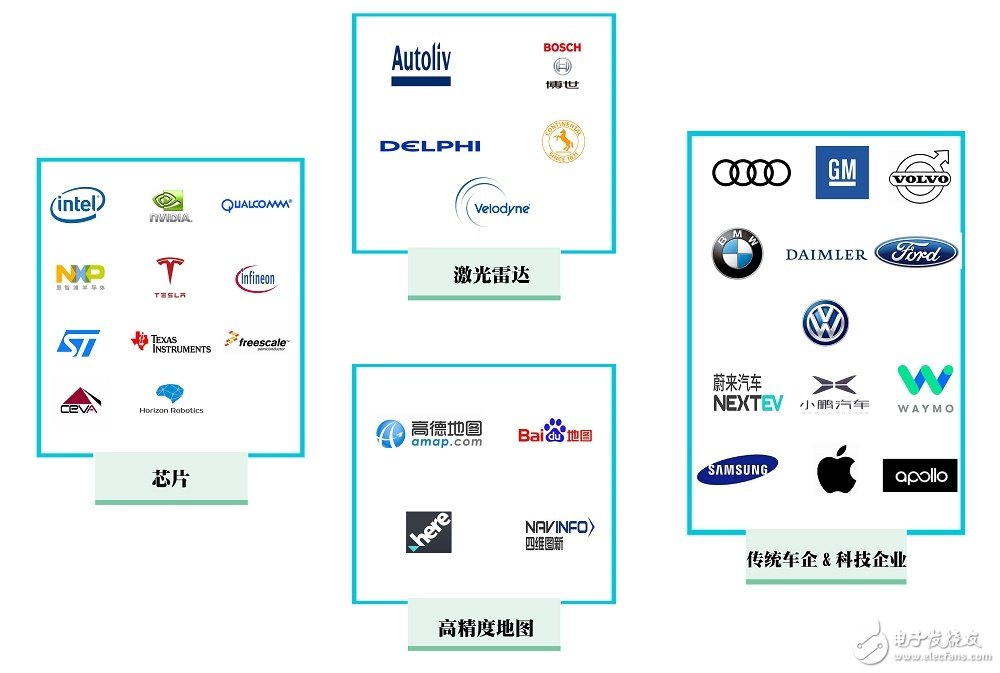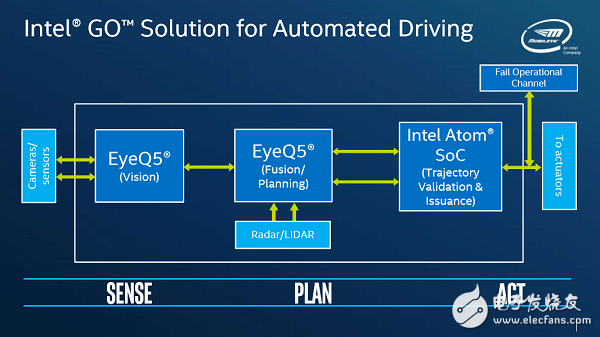The core software for autonomous driving is autopilot chips. In the past year, Intel and NVIDIA have been extremely competitive. The era of full-scale autopilot is considered to be 10 to 20 years later. So in the early 2017 autopilot, which developments and breakthroughs deserve our attention.
Undoubtedly, autonomous driving has become the development direction of the future car that the world's technology and automotive companies agree. In order to occupy the market, major companies are reluctant to lose opportunities in this area, and all have more or less wading autopilot industries.
The era of full-scale autopilot is considered to be 10 to 20 years later. Some professionals have predicted that "up to 25 years, unmanned systems equipped with sophisticated artificial intelligence will completely replace human drivers." So, in the past 2017, what developments and breakthroughs in autonomous driving deserve our attention?

The core software for autonomous driving is the autopilot chip. Currently, the world's most famous autopilot chip companies are Intel, NVIDIA and Qualcomm. The second echelon is Infineon, Freescale, ST (STMicroelectronics), NXP, Texas Instruments and Ceva.
In the past year, Intel and NVIDIA have been extremely competitive.
Intel: Money is going to be on the cutting edgeIn 2017, the biggest news in the field of autonomous driving was that Intel spent more than $15 billion to acquire Mobileye. As the big brother of the global semiconductor industry, Intel has an absolute advantage in the data center business, but its auto-driving special field does not have its own algorithm. After the acquisition of Mobileye, Intel not only obtained the Knwo-how of the algorithm-specific processor IP, but also made up for its lack of algorithms. It also directly obtained the market of 70% ADAS (Advanced Driver Assistance System). In the same year, Intel also acquired Alter to acquire FPGA (Programmable Logic Device) assets.
After the acquisition, Intel and Mobileye jointly developed the latest generation of EyeQ5 chips, which can provide 2.4DLTOPS per watt (teraflops per second) performance.

(Intel EyeQ5 architecture)
At the same time, Intel has made bold attempts on autonomous driving strategies and visual solutions.
While other autopilot technology R&D companies such as Waymo and Uber are still using the "Laser" solution as a solution for sensing, transmission and feedback, Intel is already considering a "visual priority" strategy with HD map production instead. Lidar sensing. If this technology is skillful, it can significantly reduce costs and obtain more economies of scale.
NVIDIA: unwilling to catch upIntel as the big brother in the field of automatic driving, NVIDIA is not far behind.
In 2017, NVIDIA officially released the world's first artificial intelligence (AI) autonomous driving platform "Drive PX Pegasus". This autonomous driving platform was developed based on NVIDIA's previous autopilot Dreive PX.
The upgraded Drive PX Pegasus is even more powerful, with more than 320 trillion operations per second, more than 10 times better than the previous version. And equipped with four AI processors. This automatic driving system is mainly for "Level5" self-driving cars.

(NVIDIA Xavier model)
In 2017, NVIDIA also announced its latest product Xavier under Drive PX and Pegasus, the next generation product, and launched a car AI supercomputer based on Xavier and Bosch and ZF.
At the same time, NVIDIA has significantly improved the performance of its autonomous driving platform in the past year and has cooperated with many auto companies and technology giants. In the traditional car companies, it has established a cooperative relationship with the public, and new energy vehicles have joined forces with Tesla, and also reached a cooperative relationship with Baidu.
We adopt the advanced technology imported from Europe, patented technology, specialized software to optimize the design for 11kV cast resin Dry Type Transformer. The core is made of cold-rolled grain-oriented silicon steel sheet which cut in step-lap by GEORG Germany TBA core cutting lines and laminated by the method of fifth-order step-by-step stacking technology, enabling the no-load performance of the core to improve greatly. The epoxy resin from American HUNTSMAN is adopted for the windings which casted in the vacuum resin casting machine imported from HEDRICH, Germany. The winding material ensures good permeability, no bubbles occur, which leads to minimum partial discharge. The HV and LV winding mate with each other tightly, which ensures solid strength of structure and capability to withstand short circuit and vibration. Under normal service condition, the service life of dry type transformer is 30 years. No crack will form on the surface of transformer winding due to temperature variation as long as the transformer runs under normal service condition.
11Kv Transformer,11Kv Dry Type Transformer,11Kv Cast-Resin Transformer,2500Kva Dry-Type Transformer
Hangzhou Qiantang River Electric Group Co., Ltd.(QRE) , https://www.qretransformer.com